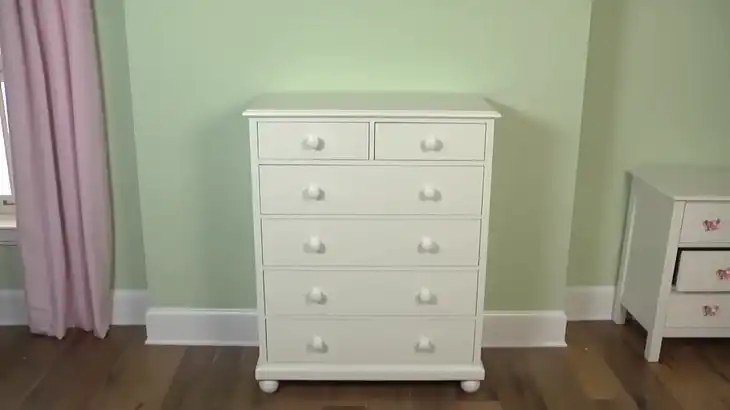How to Anchor Changing Table to Wall | 8 Easy Steps
Securing a changing table to a wall is a small effort that ensures your baby’s safety and gives you peace of mind. Babies, while tiny, can generate surprising force, especially when they wiggle, kick, or roll. A poorly secured changing table could tip over, leading to accidents.
Anchoring the table provides stability, prevents tipping, and creates a safer environment for both you and your little one. In this article, we will share the most effective way to anchor a changing table to a wall. Don’t worry. It won’t be a lengthy process, we promise.

How to Secure a Changing Table to a Wall?
Follow these detailed steps to securely anchor a changing table to the wall.
Choose the Right Location
Select a wall where the table will be used frequently. Ensure there’s ample space for you to stand comfortably and access supplies like diapers, wipes, and creams. Avoid placing the table near windows, electrical outlets, or anything hazardous within arm’s reach.
Locate the Studs in the Wall
Use a stud finder to identify studs behind the drywall. Mark these points lightly with a pencil.

If the studs are not where you plan to position the table, consider using wall anchors rated for heavy furniture instead. Anchoring into studs provides the most secure hold.

Position the Changing Table
Push the changing table against the wall where it will be anchored. Ensure it’s level by using a spirit level. Uneven furniture can compromise stability and make it harder to secure properly.

Mark the Anchor Points
On the back of the changing table, locate pre-drilled holes or areas designated for anchoring. If no such spots exist, decide on a sturdy area to attach the anchors. Use a pencil to mark where the brackets or straps will meet the wall.

Attach Anchors to the Wall
If anchoring into studs:
Drill pilot holes at the marked points, ensuring they align with the studs. Secure one end of the strap or bracket to the wall using screws.
If using wall anchors:
Follow the instructions provided with the wall anchors. Typically, you’ll drill a hole, insert the anchor, and then screw the strap or bracket into the anchor.
Secure Anchors to the Table
Attach the other end of the strap or bracket to the changing table. Use screws provided or select ones that are compatible with the material of the furniture. Tighten securely but avoid over-tightening, which could damage the table.

Test for Stability
Gently wiggle the table to check for movement. The table should feel firmly anchored and resist tipping or pulling. If it feels loose, double-check all screws and adjust as needed.
Organize and Finalize
Arrange your supplies and ensure everything is within reach to minimize leaving the baby unattended. Keep the area tidy to avoid clutter, which can increase the risk of accidents.
Where Is the Safest Place to Put a Changing Table?
Positioning a changing table correctly is just as crucial as anchoring it. The safest place for a changing table is against a solid wall away from hazards like windows, cords, and unstable furniture. Consider these factors when choosing the placement:
- Proximity to Essential Items: Place it near shelves or storage that holds baby supplies. This minimizes the need to step away during diaper changes.
- Adequate Lighting: Ensure the area is well-lit for visibility during diaper changes. Avoid placing it near direct sunlight, which could make the surface too warm for the baby.
- Room Traffic: Keep the changing table away from high-traffic areas to avoid accidental bumps or disturbances.
If you’re working with limited space, corner walls can provide extra stability and support. Avoid placing the table in spots where you’ll frequently need to move it, as this can weaken the anchor points over time.
Frequently Asked Questions
Does a changing table need to be against a wall?
It’s strongly recommended for safety reasons. Placing a changing table against a wall provides an anchor point and reduces the risk of tipping. If placing it against a wall isn’t possible, ensure it’s anchored to another sturdy surface or bolted to the floor for stability.
How close can a table be to a wall?
The changing table should sit flush against the wall or with minimal gap (less than half an inch). This prevents movement and keeps the anchoring straps taut, ensuring the furniture remains secure.
Conclusion
Anchoring a changing table to the wall is a simple yet essential step in babyproofing your home. By following these detailed instructions and taking precautions with placement, you can create a safer environment for diaper changes. This ensures that even when the baby starts to squirm or grow more active, their safety remains uncompromised.
Taking the time to anchor your furniture doesn’t just protect your child; it also gives you the confidence to focus on what truly matters—cherishing those fleeting moments of early parenthood.






